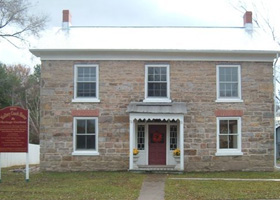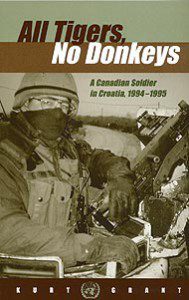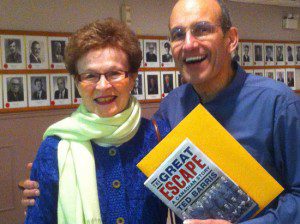
We sat around the breakfast table last Sunday morning, when our hosts in the eastern Ontario village of Mallorytown offered some insights to the job of community building. Bob and Barbara Morrison, entertaining my wife and me last weekend during one of my speaking stops, explained their secret to saving a piece of history where they live – the Mallory Coach House.
“We needed a place to house and display some village history,” Bob Morrison told us. “It seemed the right building in which to do it.”

Thinking the acquisition of something as historic as a coach house must have involved expensive legal assistance, complicated rezoning by village government, drawn out discussions with former owners and endless searches through deeds and archives, I asked what it was like to acquire the building.
“The former owner got out of bed one day and left,” Bob Morrison said. “We just put together the volunteers and fundraising and bought it.”
Sometimes the “keep it simple” axiom works best, even when dealing with items as precious as historic buildings. The Morrisons explained that their municipality, known as the Front of Yonge Township, organized a committee to finance the venture and to take on the renovation in 2005. Three years later, the volunteers had gutted the place down to the stone walls, refurbished it as a museum and opened it to the public as the Mallory Coach House.
Last weekend, we also dined with a number of the people behind that acquisition and renovation project. Among them was former Front of Yonge Township Councillor David Wells, who has taken the time to research and write “The History of Mallorytown,” published in 2011. In it, Wells documents the colourful history of the coach house, from its 19th century beginnings as a stagecoach way station, where teamsters could hitch up fresh teams of horses, where travellers could escape the bumpy ride and where stories of the road were born.
“It took an average of eight days to travel from Kingston to Montreal, a distance of 286 kilometres,” Wells writes. “Today we can cover the same distance in around three hours and much more comfortably.”

During the same weekend trip I travelled to a local branch of the Royal Canadian Legion in Brockville, Ont., to speak to members and friends of the Thousand Islands Writers’ Festival. The organizer had hoped to attract several dozen to the event; Russ Disotel was delighted to welcome as many as 75 people to his inaugural wintertime festival reading and historical talk. But as often happens, I learned as much history as I presented.
Prior to my talk about a Second World War subject, a man approached and introduced himself as a currently serving member of the Brockville Rifles and former peacekeeper with The Royal Canadian Regiment. Kurt Grant served an eight-month tour of duty in Croatia. But Grant’s service to his country wasn’t only represented by his service ribbons and sergeant’s stripes; it’s also captured in a piece of history he holds dear – his 2004 published book, “All Tigers, No Donkeys: A Canadian Soldier in Croatia, 1994-1995.” And lest I thought citizen soldiers such as Sgt. Grant made history keeping warring ethnic groups apart by accident, I learned otherwise.
“Because the military didn’t have the money to pay its [reservists] anything above the rank of private,” he wrote in his book, “we all chose to forfeit our rank and pay so that we might be considered for this tour.”
His book offers a diary of his experience of deployment into a region of nearly out-of-sight, out-of-mind peacekeeping, yes. But it also delves into the psyche of a modern Canadian soldier that few civilians know or understand. As I spoke briefly with Kurt Grant, I learned that military history doesn’t always come from wars and battles long past. The ink can still be drying to be worthy of our paying attention.
“This is the view from the bottom of the pile,” he notes in his preface, “from the pointy end of the stick was it were, not from the lofty heights of the headquarters shack.”

There was one more piece of history I discovered last weekend, one I hadn’t expected at all. As I wrapped up my talk on Saturday to the Thousand Island Writers’ Festival, we were about to retire to refreshments, when a woman asked to address the hall. She rose and complimented the festival for its event, those present for their attendance and me for my passion to preserve the stories of veterans. Moments later when the woman approached for an autograph in one of my books, I recognized her. Joanne Watson had been my high school French teacher. I hadn’t seen her since 1968, a time and history I never expected to revisit.
Bumping into history, like refurbishing a coach house or listening to a younger vet, isn’t complicated at all. But it can educate you in a hurry.
